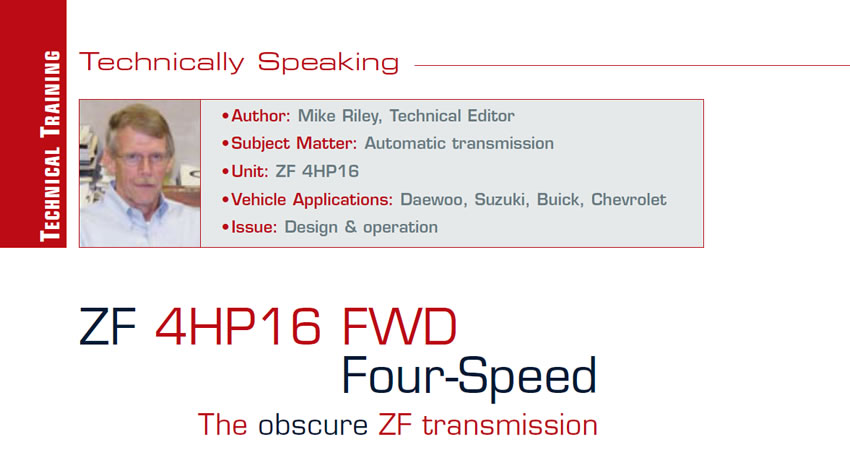5R110W Lubrication Concern (Warm weather – no problem, but winter’s coming)
We all know that certain transmission models exhibit problems based upon temperature levels. Most of the time, heat is the overriding factor, but in this installment of Technically Speaking, we’re going to look at models which are more susceptible to cold.
Later-model 5R110W transmissions could fit into this cold-temperature column; however, it would be prudent to inspect any 5R110W, regardless of the model year. When Ford launched the 5R110W in 2003, a unique cooler-line filtration system was developed and used for several years. Instead of a normal inline filter that merely splices into the pressure or return cooler line, the 5R110W used a bypass filtration design.
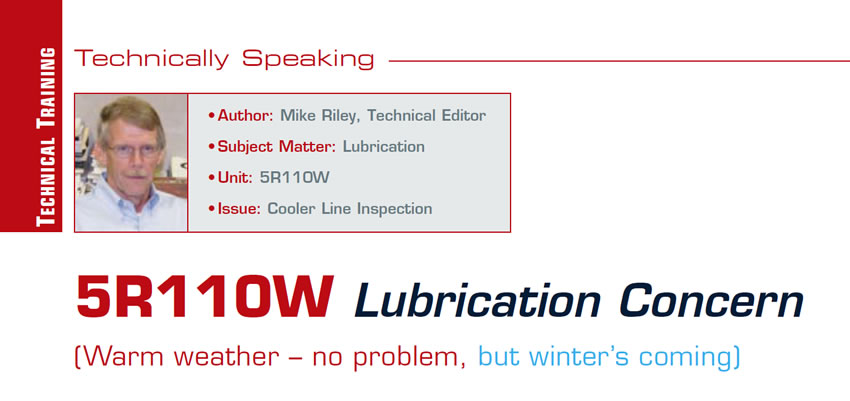
Sealing-Ring Technology: Small parts – big problems
There have been many ways to plug a hole (so to speak), and sealing rings are but one. These small pieces of metal, or other material, have been part of the automatic-transmission landscape since inception. A transmission could not work without them, even though a few applications have used a bushing to seal oil pressure.

Aisin Warner 09G Electronics: Anatomy of shift controls
There has been much focus over the years on valve-body wear issues and other deficiencies of the 09G as well as the TF80/TF81 models. Once a repair had been made, shift or apply issues still existed at times, requiring more attention to the controls.
The experts at Rostra Precision Controls have devoted a substantial amount of effort to determine how all the aspects of Aisin six-speed transmissions (valve body, solenoids and TCM) work together to provide a well-functioning and durable transmission repair.
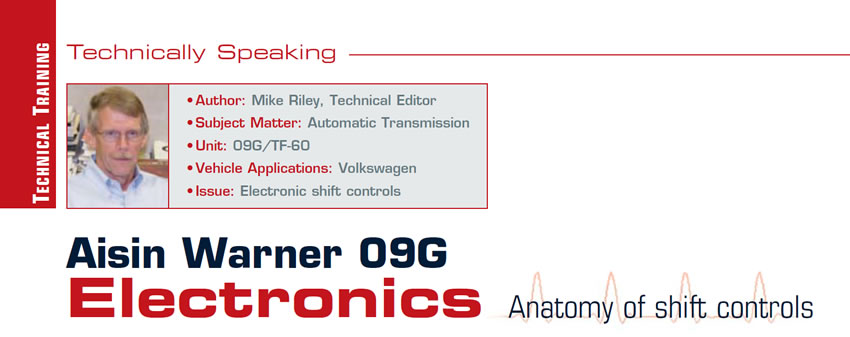
E4OD/4R100 Component Upgrade: Mix and match is not an option
E4OD/4R100 Component Upgrade: Mix and match is not an option
Technically Speaking
Author: Mike Riley, Technical Editor
Unit: E4OD/4R100
Vehicle Application: Ford trucks
Issue: Component changes
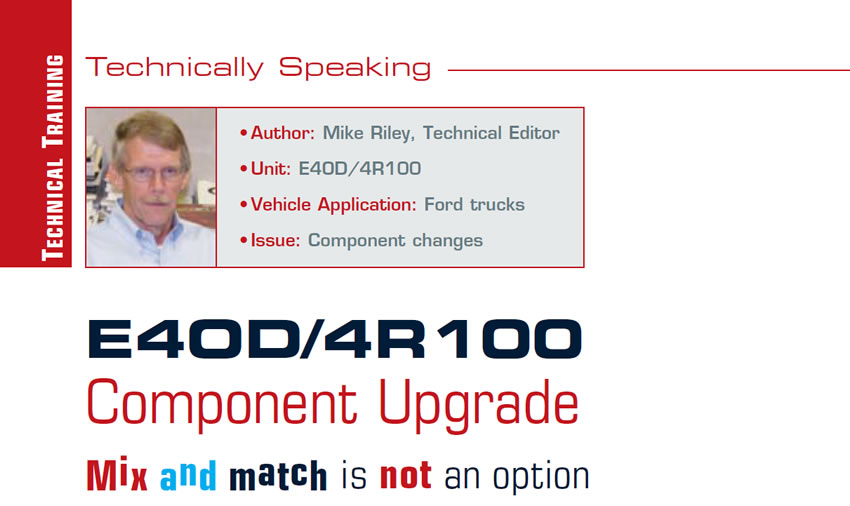
Transmission Removal & Replacement: Is it an art, or is it science?
Before any transmission can be rebuilt or have major repairs done, in general, it has to be removed from the vehicle and, regardless whether the unit is rebuilt, exchanged or converted to something else, at some point is reinstalled. This is where the “R&R man” comes up to bat.

Honda 6-Speed Automatics: How little certain things change
In an age of vehicles with seven-, eight- and even nine-speed automatics, Honda is the one constant in an ever-changing world. Transmission manufacturers have achieved the goal of extreme-ratio transmissions (a 10-speed is on the horizon), without adding iron, due to the advent of Lepelletier planets and advanced computerization. Honda, however, has stuck with its traditional architecture.
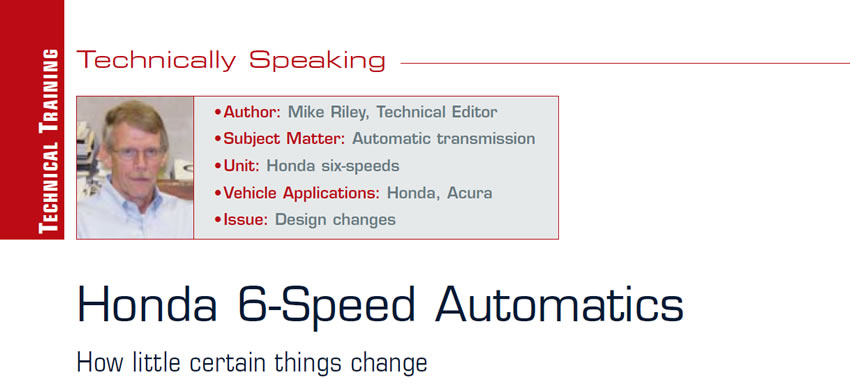
JR405E RWD 4-Speed: The Subaru FWD twin
With the unrelenting proliferation of transmission models and today’s focus on extreme gears, it’s refreshing to see a design that crosses over from RWD to FWD applications. Having one basic architecture certainly makes diagnosis and rebuilding procedures much easier.
Such is the case with the JR405E. The transmission is made by Jatco, and although the company is currently the king of CVTs, it also makes a variety of step-type units. Jatco makes transmissions for the global market as well, meaning that shops in the U.S. would never get a shot at repairing.
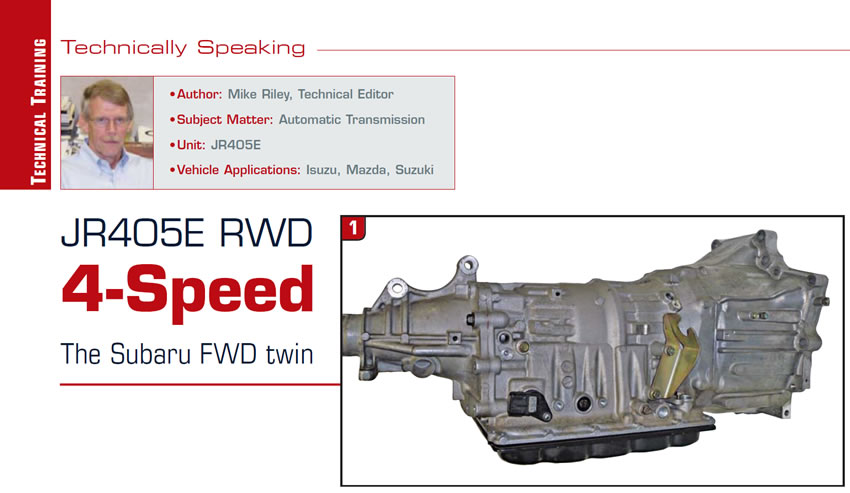
2010 Escalade Noise: What’s the rattle under the hood?
A 2010 Cadillac Escalade equipped with a 6.2L engine and 6L80 transmission arrived with a somewhat erratic rattle noise from under the hood. At first glance (or sound, actually), there was not a particular condition that would trigger the noise. And noises being what they are, this made for a tough diagnosis.
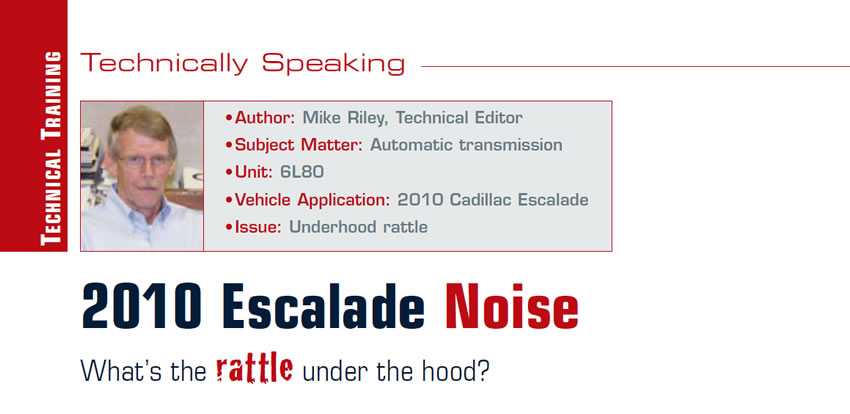
The New Jatco JF015E: When is a CVT not a CVT?
The CVT (continuously variable transmission) concept has been around forever, but CVTs have been on the road now for decades, in one form or another. Although there are several different models of CVT, they all have one thing in common: basic operation.
Over the years there have been variations in CVTs from vehicle model to model, starting with the original DAF European CVTs, up to the first Jatco CVT, Saturn VT20E, ZF VT1, Ford CFT30 and then on to later-model Jatcos. There are CVTs that use a torque converter and some that don’t. A CVT may have a push belt, while others use a drive chain. Electrical components also vary widely among models. In addition, certain models use a direct-drive pump while others use a chain-driven remote pump. The CFT30 uses a pump with oscillating pistons. A CVT will also have a planetary gear set, primarily for reverse.

Automatic-Transmission Fluid: What is today’s reality?
Long gone are the simpler times of having just one or two types of transmission fluid. Throughout the 1950s, ’60s and early ’70s, there were basically GM type A or type A “suffix A” and Ford type F. Because of a changing environment, such as increasing engine/transmission temps as well as a fluid-component issue (remember the ban on sperm-whale oil), fluid started to evolve.
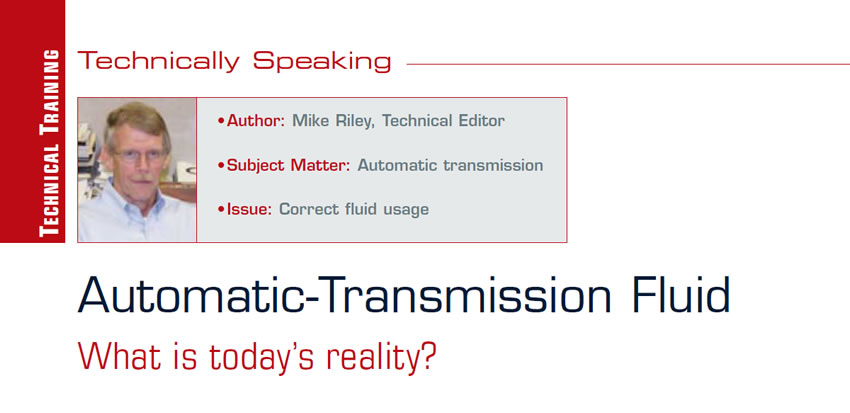
JR710E RWD 7-Speed: RE5R05A plus parts/minus parts
Jatco, a Japanese transmission manufacturer, has for decades produced a variety of transmissions, and although Nissan and Subaru have been the largest consumers, several car companies use its products.
In recent years, the focus of Jatco has leaned toward CVTs (continuously variable transmissions); however, the company has always produced step-type transmissions – from simple three-speed automatics all the way up the food chain to seven-speed transmissions, like the JR710E/711E.
Jatco also launched a hybrid version of the JR710E, coded JR712E, in 2011. The JR712E concept is somewhat in line with the GM 2ML70 hybrid.
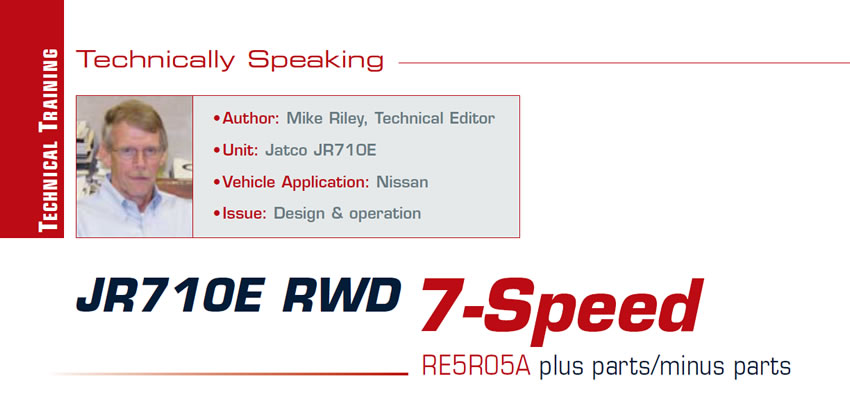
ZF 4HP16 FWD Four-Speed: The obscure ZF transmission
For decades, ZF, the German transmission manufacturer, has been cranking out an array of automatic and manual transmissions, from basic three-speeds to cutting-edge eight- and nine-speed automatics. The company has been first to market with several innovations now used by most OE manufacturers in one form or another. Not all of its development projects, however, have been familiar to the aftermarket repair industry.
